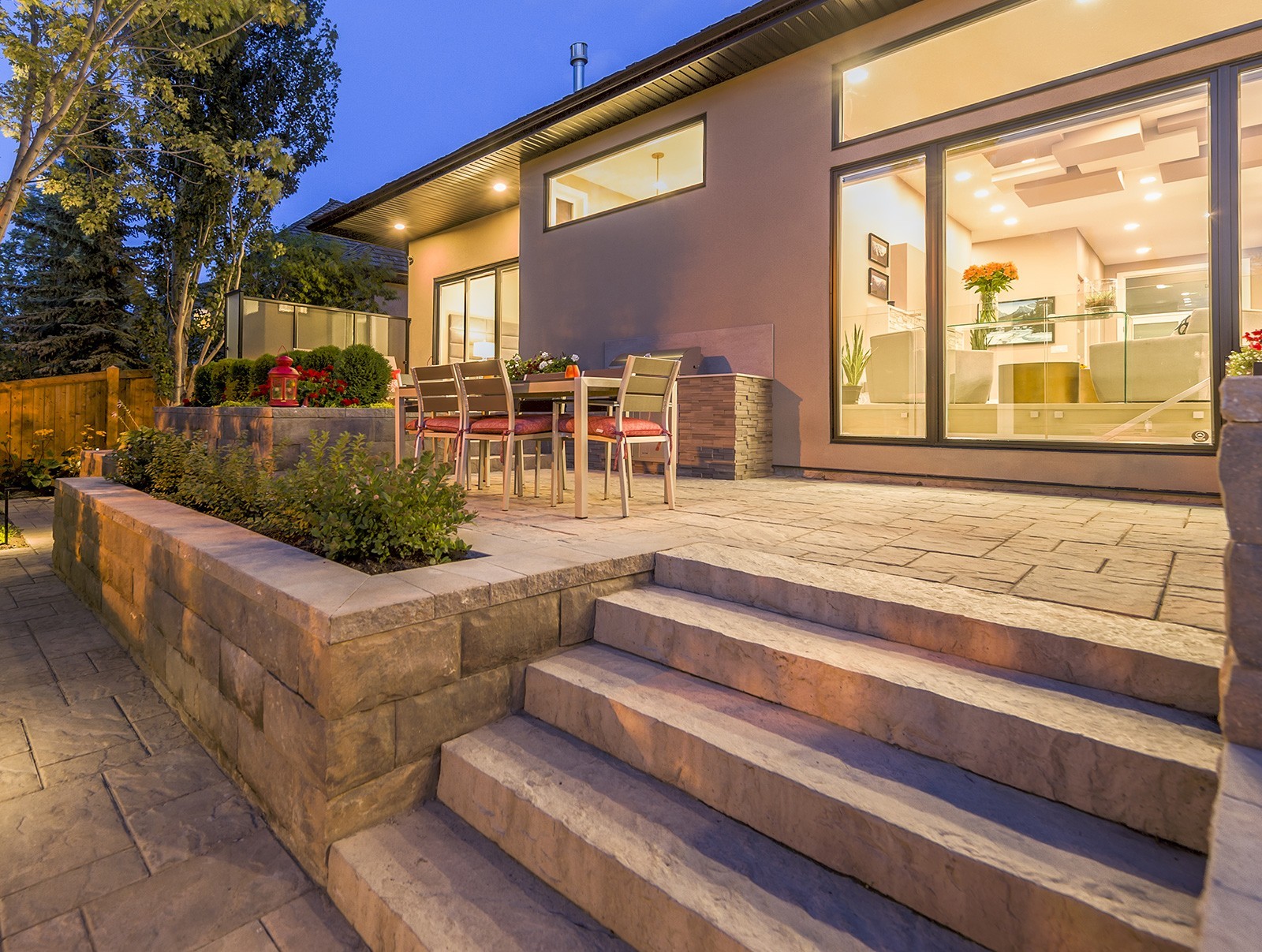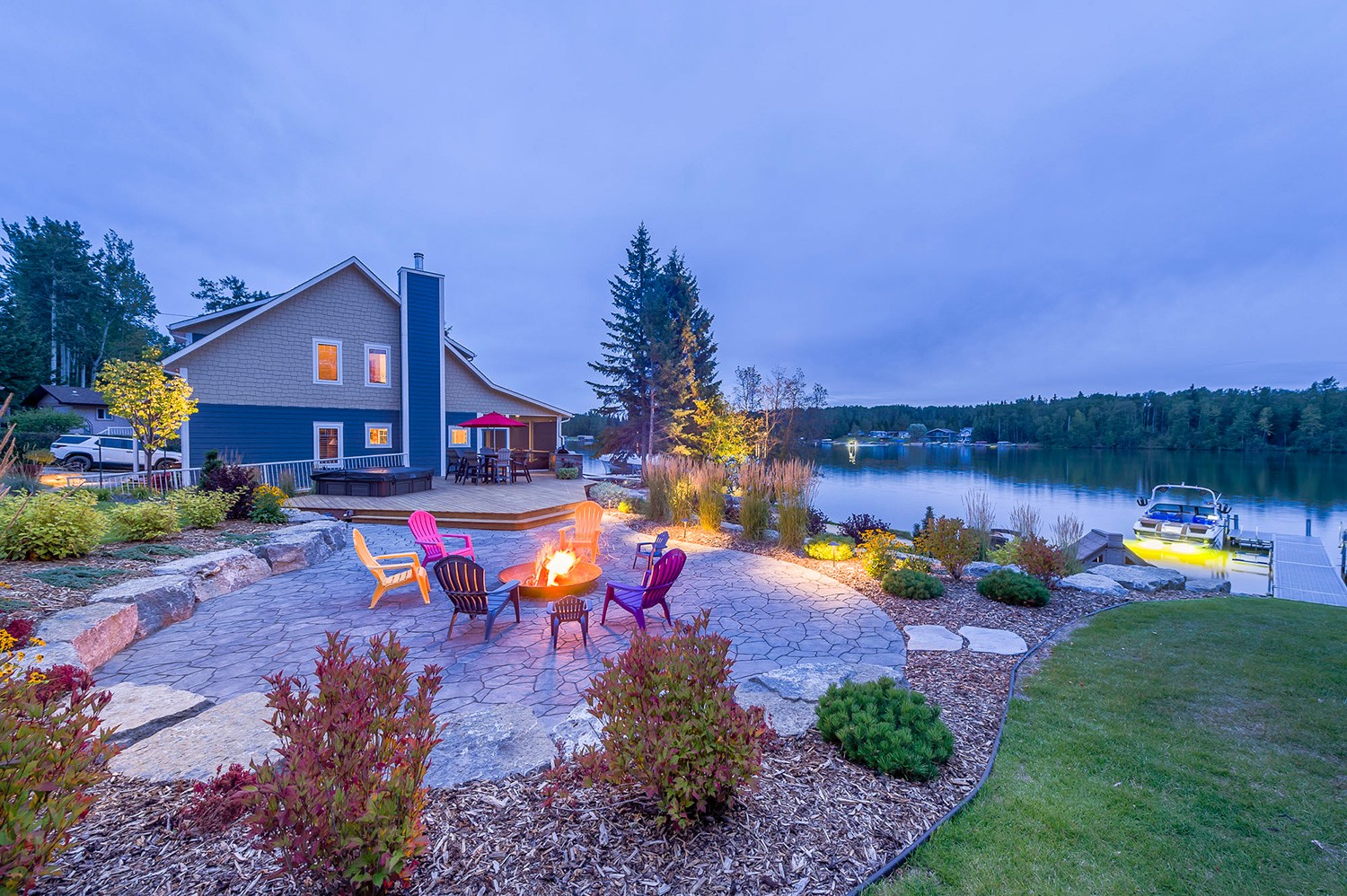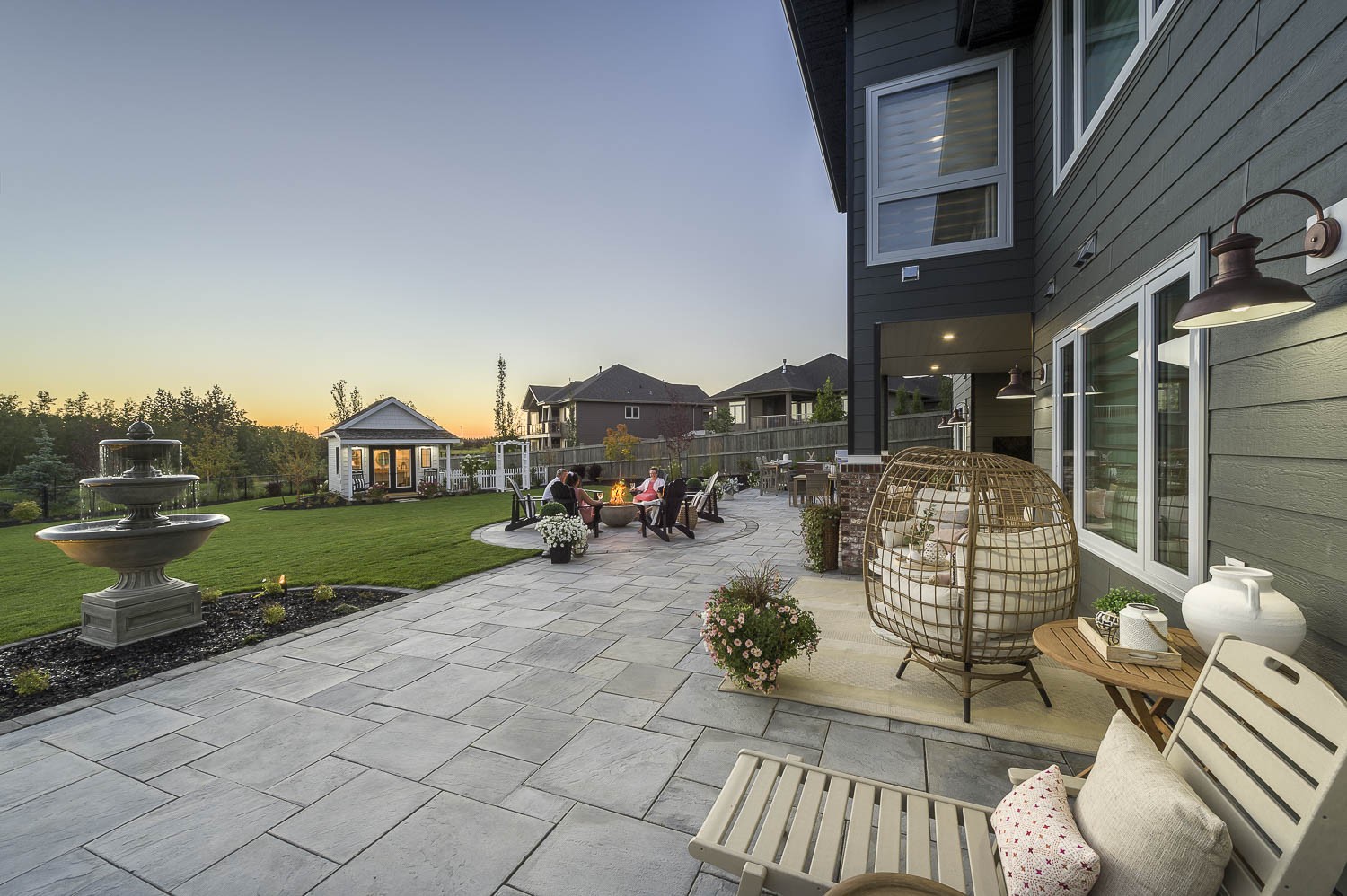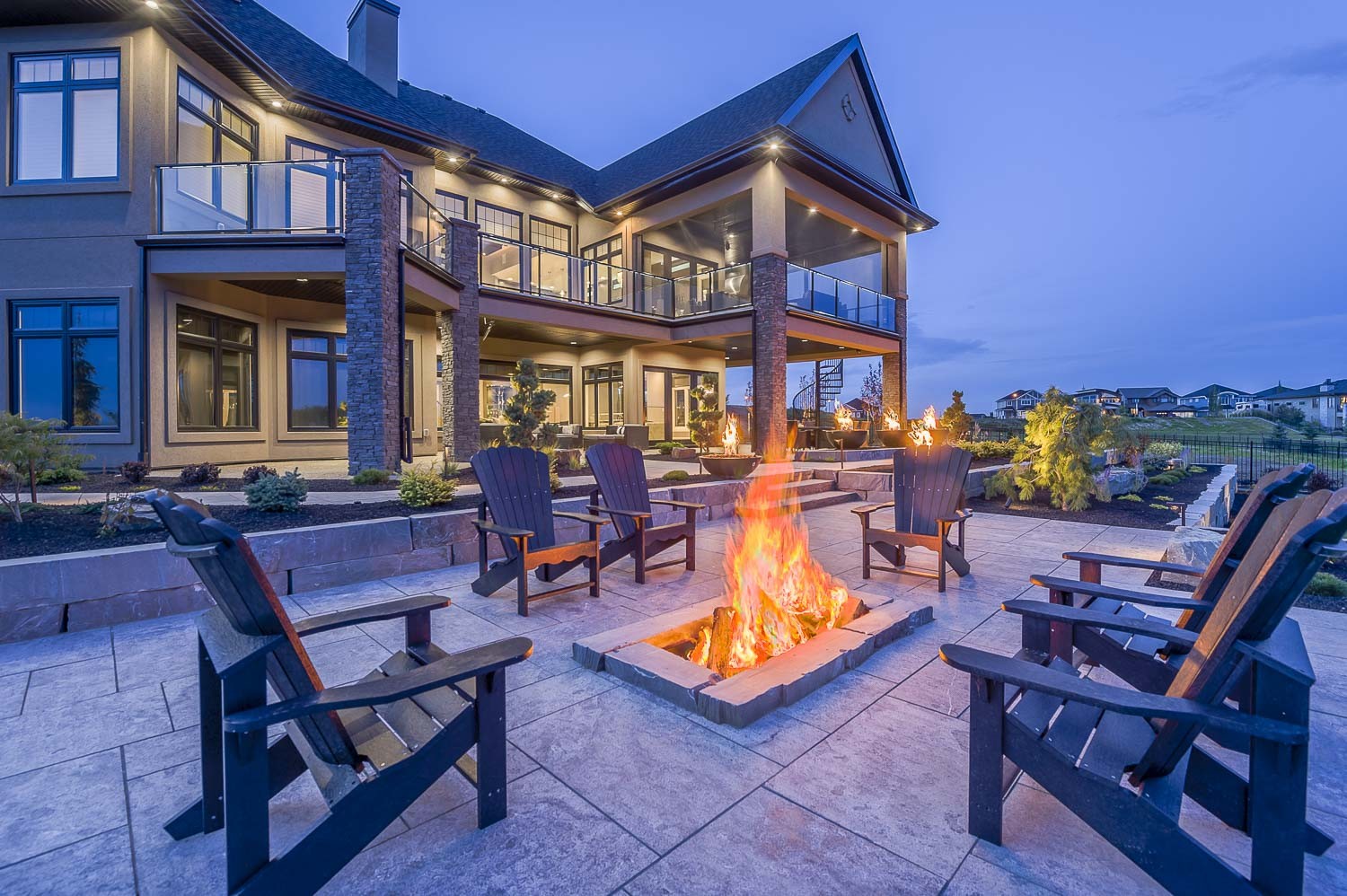Blog
Enhancing Lifestyle and Property Value

Your home is your sanctuary, and the way you design and maintain its exterior can have a profound impact on your overall lifestyle and property value. One of the most effective ways to enhance both is through residential landscaping. With the right combination of plants, hardscapes, and outdoor features, you can create a stunning oasis that not only reflects your personal style but also adds value to your home. In this blog post, we will explore the many benefits of residential landscaping, provide tips on getting started, discuss important considerations when landscaping your home, showcase popular designs and materials used in residential landscaping, and offer insights into hiring a professional landscape designer. So grab your gardening gloves and get ready to transform your outdoor space into a masterpiece!
The Benefits of Residential Landscaping
Enhancing your outdoor space through residential landscaping comes with a myriad of benefits that go beyond just aesthetic appeal. First and foremost, it creates a welcoming atmosphere for you and your family to enjoy. Imagine stepping into your backyard oasis after a long day at work – the scent of blooming flowers, the gentle rustling of leaves, and the soothing sound of water features can instantly help you unwind and find tranquility.
Additionally, well-designed landscaping can significantly increase the value of your property. Curb appeal plays a crucial role when selling a home, and an attractive exterior can make all the difference in attracting potential buyers. A thoughtfully landscaped yard not only grabs attention but also gives off an impression that your property is well-maintained.
Residential landscaping also offers environmental benefits. By incorporating native plants into your design, you create habitats for local wildlife while reducing water consumption since these plants are adapted to thrive in their natural environment.
Furthermore, landscaping can provide practical advantages such as creating functional spaces for outdoor activities like barbecues or gardening. It acts as an extension of your living space where you can entertain guests or simply relax with loved ones amidst nature's beauty.
Residential landscaping enhances both our physical surroundings and our overall quality of life by providing us with beautiful spaces to connect with nature, increasing property value, contributing positively to the environment, and adding functionality to our homes' exteriors.
How to Get Started with Residential Landscaping
When it comes to enhancing the outdoor aesthetics of your home, residential landscaping is a fantastic way to transform your property into a serene oasis. But where do you begin? How do you get started with residential landscaping?
First and foremost, take some time to envision what you want your ideal outdoor space to look like. Consider factors such as functionality, design style, and maintenance requirements. Do you want a sprawling garden filled with vibrant flowers and lush greenery? Or perhaps a cozy patio area for entertaining guests?
Next, assess the current state of your yard. Take note of any existing features that can be incorporated into your landscaping design, such as mature trees or natural slopes. This will help guide the layout and placement of new elements.
Once you have a clear vision in mind, it's time to create a detailed plan. Start by sketching out the desired layout on paper or using digital tools available online. Include key elements such as pathways, seating areas, flower beds, and water features.
Consider incorporating sustainable practices into your landscaping design by choosing native plants that require less water and maintenance. This not only helps conserve resources but also adds an eco-friendly touch to your outdoor space.
Don't forget about practical aspects like irrigation systems and lighting fixtures. Proper watering techniques and strategically placed lights can greatly enhance the overall appeal of your landscape while ensuring its longevity.
Now that you have a solid plan in place, it's time to roll up those sleeves! Begin by clearing away any unwanted debris or overgrown vegetation from the area where you'll be working. Prepare the soil appropriately based on the types of plants or grasses you'll be adding.
Start implementing your design one step at a time – whether it's planting flowers or installing hardscaping elements like retaining walls or stone pathways – taking care not to overwhelm yourself with too much work all at once.
Remember that patience is key when it comes to residential landscaping; Rome wasn't built in a day, and neither will your dream yard.
What to Consider when Landscaping your Home
When it comes to landscaping your home, there are several important factors that you need to consider. First and foremost, you should think about the overall style and theme that you want for your outdoor space. Do you prefer a modern and sleek look or a more natural and rustic feel? This will help guide your choices in terms of plants, materials, and design elements.
Another crucial aspect is the size of your yard. The available space will determine what features can be included in your landscape design. If you have a small yard, for example, it might be best to focus on creating functional areas such as a seating area or a garden bed. On the other hand, if you have ample space, you can explore options like adding an outdoor kitchen or even incorporating water features like ponds or fountains.
The climate of your region is also something to keep in mind when planning your landscape. Different plants thrive in different climates so choose those that are suitable for the local weather conditions. Additionally, consider how much time and effort you are willing to dedicate to maintenance tasks such as watering and pruning.
Furthermore, don't forget about the practical aspects of landscaping. Take into account factors such as drainage systems and irrigation needs when designing your outdoor space. You want to ensure that water flows away from structures properly without causing any damage.
Budget plays an important role in any landscaping project. Determine how much money you are willing to allocate for this endeavor before getting started so that you can make informed decisions about which materials or services fit within your financial means.
By considering these key points - style preferences, size constraints, climate suitability, maintenance requirements, practical considerations, and budget limitations - you can create a stunning landscape design tailored specifically for your home.
Types of Materials used in Residential Landscaping
When it comes to residential landscaping, there are various types of materials that can be used to transform your outdoor space into a beautiful and functional oasis. Choosing the right materials is crucial for creating a landscape design that not only enhances the aesthetics of your property but also withstands different weather conditions.
One popular material used in residential landscaping is natural stone. Natural stones such as granite, limestone, and slate offer a timeless and elegant look to any outdoor area. They can be used for pathways, patios, retaining walls, or even as decorative elements in garden beds.
Another commonly used material is wood. Wood adds warmth and texture to your landscape design. It can be utilized for decks, pergolas, fences, or raised planters. Different types of wood like cedar or redwood are known for their durability and resistance to rotting.
For those looking for a low-maintenance option, concrete pavers are an excellent choice. They come in various shapes, sizes, and colors which allow you to create unique patterns or designs according to your preference. Concrete pavers can be used for driveways, walkways, and patios.
In addition to these materials, gravel or crushed rock can be utilized as ground coverings around plants or trees. This not only helps with weed control but also gives a neat and clean appearance.
Remember that each material has its own advantages so it's important to consider factors like cost, durability, and maintenance requirements when selecting materials for your residential landscaping project. By carefully choosing the right combination of materials, you can create an inviting outdoor space that reflects your style while increasing the value of your property. Whether you prefer natural stones, wooden elements, or concrete pavers, there's no limit to what you can achieve with creative use of different materials in your residential landscaping design!
Popular Landscaping Designs
When it comes to landscaping your home, there are countless design options to choose from. Each design brings its own unique charm and can transform your outdoor space into a beautiful oasis.
One popular landscaping design is the traditional garden style. This design features an array of colorful flowers and plants arranged in a structured manner. It creates a classic and timeless look that never goes out of style.
For those who prefer a more modern aesthetic, the minimalist landscape design is perfect. This style embraces simplicity with clean lines, open spaces, and minimal ornamentation. It creates a sleek and contemporary feel that complements any architectural style.
If you want to add some romance to your outdoor space, consider the cottage garden design. This enchanting style incorporates an abundance of flowering plants, climbing vines, and charming pathways. It evokes a sense of whimsy and nostalgia that will transport you to another time.
For those looking for something bold and dramatic, the tropical landscape design is ideal. With lush foliage, vibrant colors, and exotic plant varieties such as palm trees or bamboo, this design instantly transports you to paradise.
Another popular option is the Mediterranean-inspired landscape design. This style showcases natural elements such as stone walls or pergolas combined with drought-tolerant plants like lavender or olive trees. The result is a warm and inviting atmosphere reminiscent of coastal regions.
No matter which landscaping design you choose for your residential property, make sure it aligns with your personal preferences while also complementing the overall architecture of your home.
Hiring a Professional Landscape Designer
When it comes to landscaping your residential property, sometimes it's best to leave it in the hands of professionals. Hiring a professional landscape designer can save you time, money, and headaches in the long run.
A professional landscape designer has the knowledge and expertise to create a design that suits your specific needs and preferences. They are trained to understand how different elements work together harmoniously and can help you achieve the desired look for your outdoor space.
Additionally, a professional will have access to resources that may not be available to you as an individual homeowner. From high-quality materials to specialized equipment, they can ensure that every aspect of your landscaping project is executed with precision and efficiency.
Furthermore, hiring a professional also means delegating the responsibility of overseeing the entire project. This allows you more time to focus on other aspects of your life while still achieving exceptional results.
When it comes to residential landscaping projects, hiring a professional landscape designer is often worth considering. Their expertise and experience will undoubtedly enhance both the aesthetics and functionality of your outdoor space.
Residential landscaping is a fantastic way to enhance both your lifestyle and property value. By creating a beautiful outdoor space, you can enjoy the benefits of nature right in your own backyard. Whether you're looking to relax and unwind, entertain guests, or increase the curb appeal of your home, landscaping can help you achieve all these goals.
To get started with residential landscaping, consider your needs and preferences. Think about how you want to use the space and what elements are important to you. Research different types of plants, materials, and designs that align with your vision.
When landscaping your home, it's crucial to take into account factors such as climate conditions, maintenance requirements, and budget constraints. Choose plants that thrive in your area's climate and require minimal upkeep if you have a busy schedule. Additionally, set a realistic budget for your project so that it doesn't become overwhelming financially.
There are various materials used in residential landscaping that can add beauty and functionality to your outdoor space. From natural stone pavers for pathways to composite decking for entertaining areas – the choices are endless! Consider durability, aesthetics, and maintenance when selecting materials for different features in your landscape design.
Popular landscaping designs range from traditional formal gardens with neatly trimmed hedges and symmetrical patterns to modern minimalist designs featuring clean lines and open spaces. Explore different styles based on personal taste as well as architectural compatibility with your home.
For more information, you can contact The Jansen Group at 780.399.4200 or email them at office@thejansengroup.ca. You can also visit their website at https://thejansengroup.ca/contact to learn more about their services and expertise.


